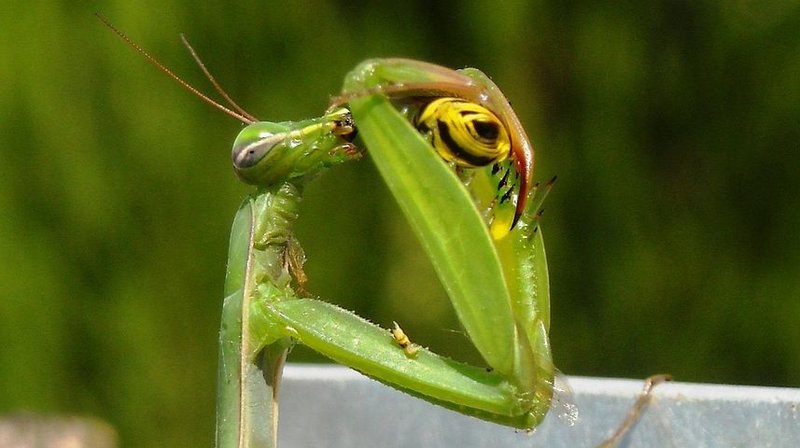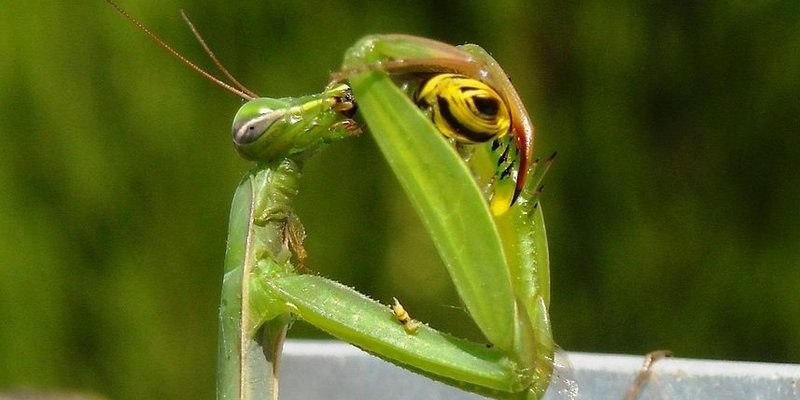
In this article, we’ll take a friendly, deep dive into comparing the praying mantis with some similar insects. We’ll explore what sets them apart, how they fit into their environments, and what you might not know about these creatures. So grab a cup of coffee, and let’s chat about these intriguing insects!
What is a Praying Mantis?
The praying mantis is a predatory insect belonging to the order Mantodea. They’re easily recognizable by their long thorax and triangular heads. They can hold their front legs in a way that looks like they’re praying, which is how they got their name. These fascinating bugs can vary in size, usually measuring between 1 to 6 inches long. That’s quite the range!
One of the most striking features of praying mantises is their camouflage abilities. Many species can blend into their surroundings—like leaf or stick mimics. This helps them ambush prey, which often consists of insects and sometimes even small birds or lizards. They’re like the stealthy ninjas of the insect world, using their skills to hunt effectively.
You might be wondering about their life cycle. Female mantises often eat the male after mating, which sounds brutal but is a way to ensure that she has enough nutrients to lay eggs. This behavior highlights their complex and sometimes harsh life in the wild.
Meet the Stick Insect
Stick insects, also known as phasmids, are another group of insects that might catch your attention. These insects excel in blending in with their environment, often resembling twigs or branches. Just think of them as nature’s masters of disguise. Unlike the praying mantis, which actively hunts, stick insects are herbivorous, munching on leaves and being more passive in their approach to life.
There are many types of stick insects found around the world, and they can be surprisingly large. Some species can grow up to a foot long! Their long, slender bodies and lack of bright colors help them avoid predators. In a game of hide-and-seek, stick insects would be champions!
Reproduction in stick insects can be quite fascinating. Some species are capable of parthenogenesis, meaning females can produce eggs without mating! This strategy can be advantageous in environments where males are scarce.
The Lacewing: A Different Approach
Next up, we have the lacewing, a delicate insect known for its beautiful, translucent wings that resemble lace. Lacewings are important players in the ecosystem because their larvae are voracious predators of pests like aphids. Talk about a natural pest control service!
While the praying mantis relies on stealth and strength to hunt, lacewings have a different tactic. They may not be as visually captivating as mantises, but their life cycle is equally impressive. Lacewing larvae go through several stages (instars) before becoming adults, and during this time, they can consume a huge number of aphids—up to 200 in just a week!
Interestingly, lacewings also produce a pheromone to attract mates, which can create an intriguing social dynamic in their world. In contrast to the solitary nature of the praying mantis, lacewings can often be seen fluttering around in groups.
How Do They Fit into Their Ecosystems?
Every insect plays a role, and it’s essential to understand the niches these creatures occupy. The praying mantis is often considered a primary predator in its environment, helping to keep insect populations in check. Their hunting skills mean they can impact the balance of life within their habitats—sort of like if a big cat roamed through your local park!
On the other hand, stick insects serve a vital role as herbivores. They help with nutrient cycling in their ecosystems by feeding on leaves and thus promoting plant growth. If you think about it, they’re kind of like the gardeners of the insect world, ensuring plants can thrive.
Lacewings also help maintain balance in their ecosystems. By preying on pests, they naturally reduce plant damage and contribute to healthier ecosystems. Their role as predators makes them valuable allies to farmers and gardeners seeking to maintain healthy crops without using chemicals.
Comparing Characteristics
You might be wondering how these insects stack up against each other when it comes to characteristics. Here’s a simple comparison to illustrate their differences:
| Characteristic | Praying Mantis | Stick Insect | Lacewing |
|---|---|---|---|
| Diet | Predatory (insects, small animals) | Herbivorous (leaves) | Predatory (pests like aphids) |
| Habitat | Gardens, forests | Forests, shrublands | Gardens, crops |
| Camouflage | Yes (leaf-like body) | Excellent (stick-like body) | Moderate (wing patterns) |
| Reproduction | Eggs, sometimes post-mating cannibalism | Eggs, some via parthenogenesis | Eggs, mate-pheromones |
Why Understanding Their Differences Matters
Understanding the differences between the praying mantis and its similar insects isn’t just for bug enthusiasts. It has real-world implications in gardening, agriculture, and biodiversity conservation. By appreciating the unique roles each of these insects play, we can better protect their habitats and maintain a healthy environment.
For instance, if you’re gardening and want to control pests, inviting lacewings into your space could be beneficial. Meanwhile, recognizing the presence of stick insects can mean your garden is thriving—after all, they’re munching on the right plants!
If you’ve ever had a praying mantis visiting your yard, know that it’s doing its part in the ecosystem as a predator. Each insect provides a different solution to maintaining balance in nature’s intricate web.
In conclusion, comparing the praying mantis with similar insects like stick insects and lacewings reveals a rich tapestry of life. Each creature has adapted to its environment in unique ways, fulfilling different roles within the ecosystem. Whether they’re skillful predators or masters of camouflage, these insects remind us of the beauty and complexity found in nature.
So, the next time you spot a praying mantis or its fascinating relatives, take a moment to appreciate the incredible adaptations and behaviors that allow them to thrive. They might just be small, but their impact is significant! As we continue to explore and learn about these creatures, we can foster a greater understanding of the ecosystems they inhabit—making our world a better place for all living beings.

